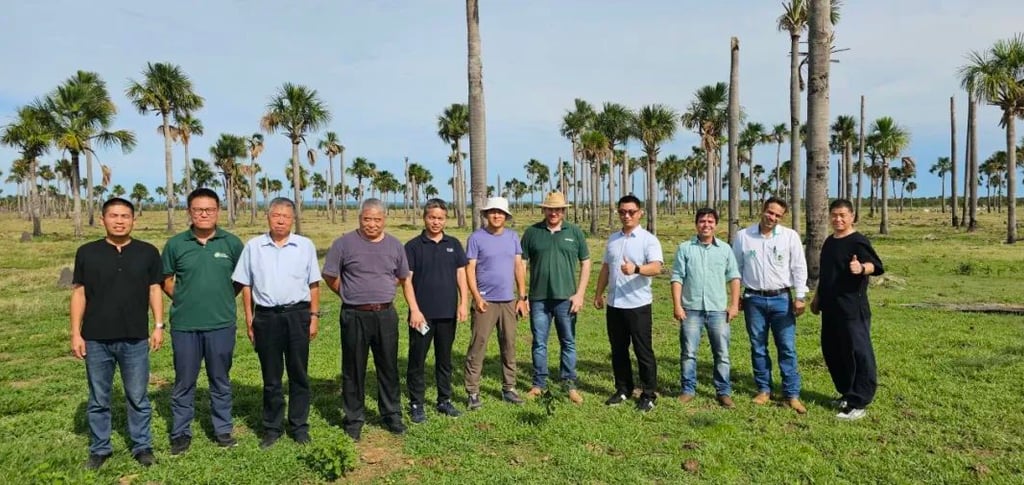Brazilian Beef Cattle Industry Inspection Report Part 1 | Overview of Brazil's Beef Cattle Industry
Prior to our visit, our knowledge of Brazil in South America was limited to impressions of samba, football, Rio de Janeiro's beaches and iconic landmarks like Christ the Redeemer, the Amazon Rainforest, and the spectacular Iguazu Falls.
12/19/20234 min read
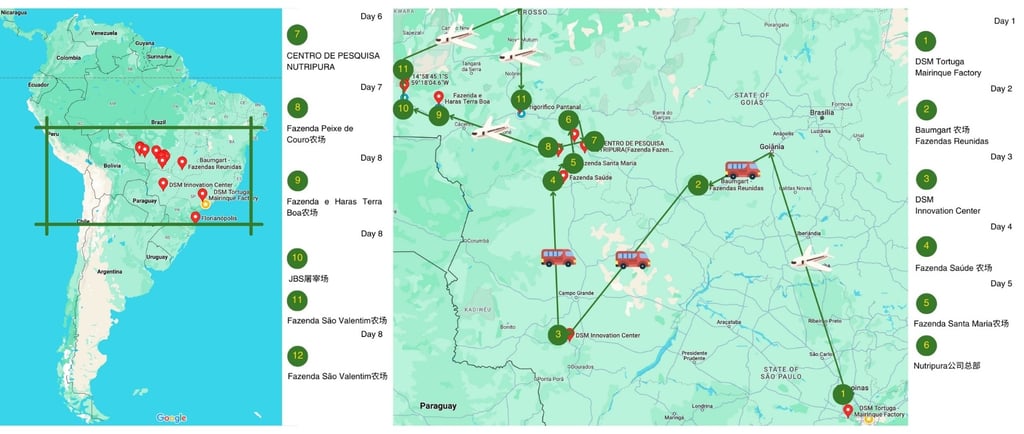

Introduction
From November 25 to December 11, 2023, a delegation of nine entrepreneurs and experts organized by the China Agricultural University Beef Research Center visited Brazil for an inspection of the beef cattle industry. During the visit, eight calf-raising farms and six fattening farms across five states were inspected. Additionally, two commercial research and innovation centers and two beef slaughterhouses were toured. The delegation also attended presentations by experts from the University of São Paulo on the organization of Brazil's beef cattle production and industry research. Through these visits and discussions, a comprehensive understanding of Brazil's beef cattle industry was gained. The findings have been compiled and organized, and this report is presented to fellow professionals in China's beef cattle farming industry. We hope that these insights will provide valuable references for the development of China's beef cattle industry.
Today, we share the first topic:
Overview of Brazil's Beef Cattle Industry
Before our visit, our knowledge of Brazil in South America was limited to impressions of samba, football, Rio de Janeiro's beaches, and iconic landmarks like Christ the Redeemer, the Amazon Rainforest, and the spectacular Iguazu Falls. However, upon arrival in Brazil, we discovered that beyond these well-known aspects, Brazil is indeed a kingdom of cattle. With a population of cattle surpassing that of humans, it stands as the world's largest exporter of beef.
Overview of the Brazilian beef industry
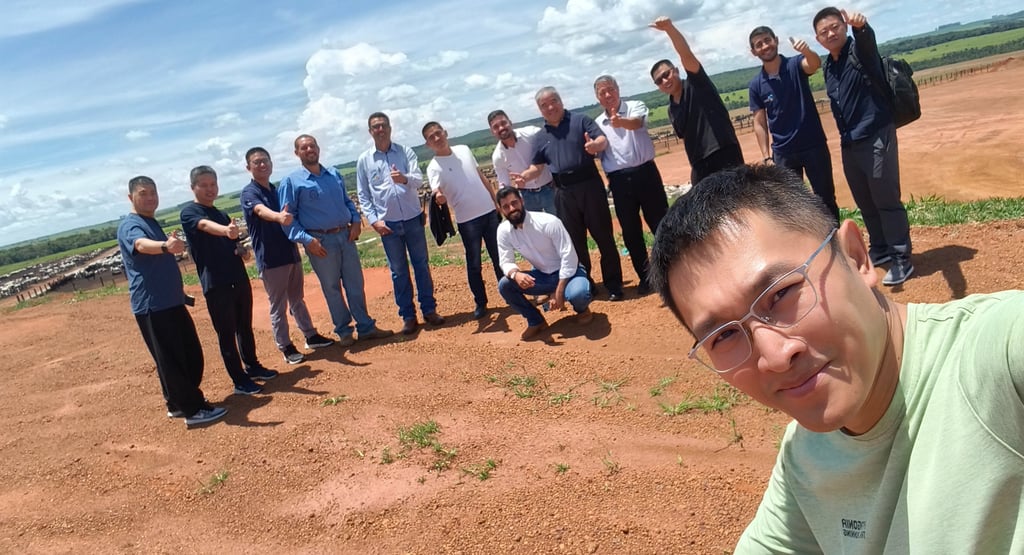

2. Overview of Brazil's Beef Cattle Industry
Brazil stands as a crucial global producer of beef, with the cattle industry serving as a cornerstone of Brazilian animal husbandry. Beef cattle are primarily found in the Southeast and Central-West regions, spanning the Brazilian Highlands and the Amazon Plains. Both the cattle population and beef production in Brazil rank among the world's highest. According to data from Brazil's National Institute of Geography and Statistics (IBGE), the cattle inventory reached a record-breaking 234 million head in 2022, marking a 4.3% increase from the previous year's 224.6 million head. This indicates that the number of cattle in Brazil exceeds its human population by 15.5%.
Approximately 80% of Brazil's cattle belong to the Zebu breed, characterized by a distinctive hump on the shoulder, making them well-suited for tropical climates and extensive grazing conditions. Originating from India, Zebu cattle, particularly the Nelore variety, which constitutes 90% of the Zebu population, were introduced to Brazil over a century ago. Through genetic improvement, the Nelore breed has become prevalent in Brazil. The well-developed cattle industry ensures an ample supply of beef for the Brazilian population, with per capita beef consumption reaching 22.1 kg in 2022, surpassing the average in developed countries (14.7 kg).
Brazil's vast land area includes grasslands three times the size of cultivated land. The southern region, in particular, is part of the renowned Pampas grasslands, featuring high-quality pasture. The combination of excellent pasture quality and affordable land prices results in the majority of Brazilian beef cattle being raised on natural grasslands. Only during dry seasons do farmers provide supplementary feed, such as small amounts of corn or soybean meal. Since 2006, Brazil has established nutritional standards for Zebu and crossbred cattle, releasing the third revised edition in 2016, guiding farmers in supplementary feeding practices.
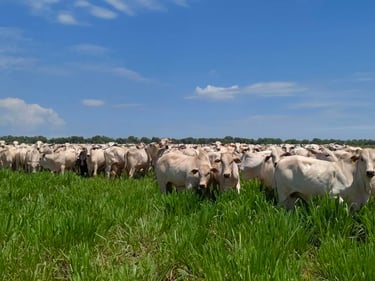
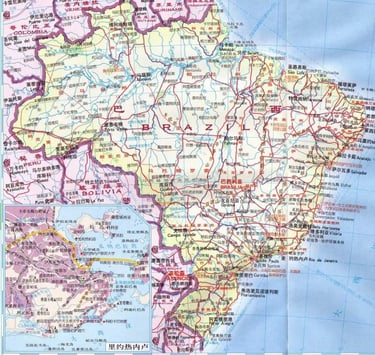


2. Overview of Brazil's Beef Cattle Industry
Brazil stands as a pivotal global player in beef production, with beef cattle constituting the backbone of the country's livestock industry. Beef cattle are primarily concentrated in the Southeast and Central-West regions, spanning the Brazilian Highlands and the Amazon Plains. Both the cattle population and beef production in Brazil rank among the highest globally. According to data from Brazil's National Institute of Geography and Statistics (IBGE), the cattle inventory reached a historic high of 234 million head in 2022, representing a 4.3% increase from the previous year's 224.6 million head. This implies that Brazil's cattle population surpasses its human population by 15.5%.
Approximately 80% of Brazil's cattle belong to the Zebu breed, characterized by a prominent hump on the shoulder, making them well-adapted to tropical climates and extensive grazing management conditions. Originating in India, Zebu cattle were introduced to Brazil over a century ago, evolving through genetic improvement into today's Nelore breed, which constitutes 90% of the Zebu population. The developed cattle industry ensures an abundant supply of beef for the Brazilian population, with per capita beef consumption reaching 22.1 kg in 2022, exceeding the average in developed countries (14.7 kg).
Geography and Cattle Ranching Practices
With its vast land area, Brazil boasts grassland acreage three times that of cultivated land. The southern region is part of the renowned Pampas grasslands, known for excellent pasture quality. The combination of abundant grasslands, low land prices, and favorable conditions makes Brazil's beef cattle predominantly raised on natural pastures. Only during dry seasons do farmers provide minimal supplements such as corn or soybean meal.
Since 2006, Brazil has established nutritional standards for Zebu and crossbred cattle, with the third revised edition published in 2016, guiding farmers in supplementary feeding practices.
Beef Production and Trade
According to data from Brazil's Ministry of Economy, the country slaughtered 42.25 million cattle in 2022, producing 10.35 million tons of beef, with beef exports reaching 2.898 million tons. China stands as Brazil's largest trading partner and the primary importer of Brazilian beef. In 2022, China imported 1.683 million tons of Brazilian beef, constituting 58.1% of Brazil's total beef exports and 62.6% of China's total beef imports for that year.
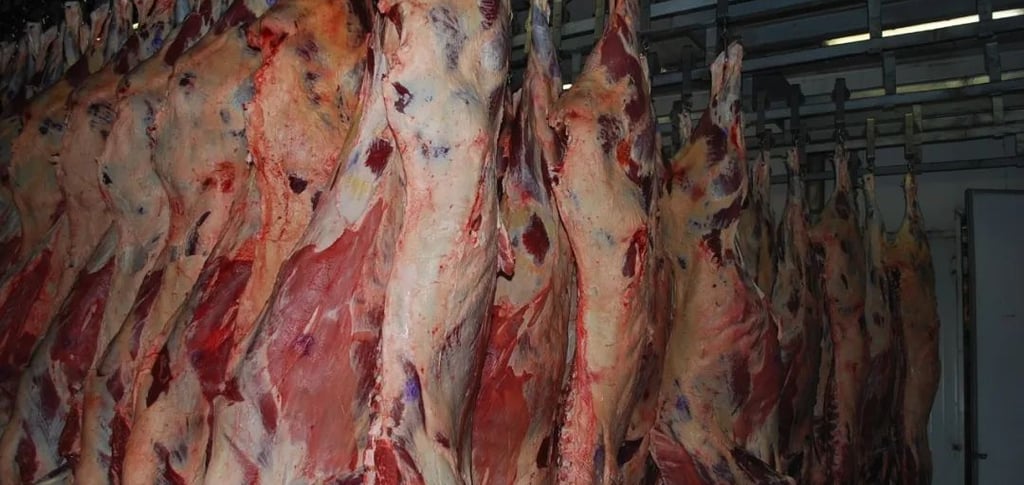

3. Focus of the Current Inspection
The delegation visited eight calf-raising farms and six fattening farms located in the states of São Paulo, Goiás, Paraná, Mato Grosso, and South Mato Grosso. They toured the DSM-Firmenich Brazil Innovation Center and the Nutripura Company Innovation Research Center. Additionally, visits were made to two beef slaughterhouses, JBS and Pantanal. Expert presentations from the University of São Paulo provided insights into the organization and industrial research aspects of Brazil's beef cattle production. The inspection covered a diverse range of topics, providing a comprehensive understanding of Brazil's beef cattle industry.
